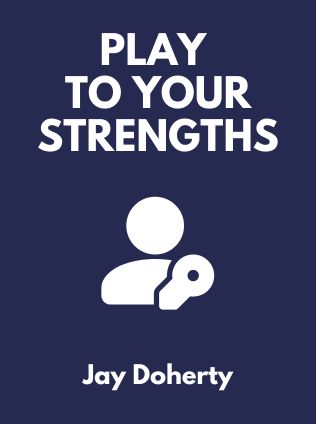
Play to Your Strengths
Managing Your Company's Internal Labor Markets for Lasting Competitive Advantage
By Haig R. Nalbantian
Published 10/2003
About the Authors
Haig R. Nalbantian, Richard A. Guzzo, Dave Kieffer, and Jay Doherty are principals of Mercer Human Resource Consulting and cofounders of the Strategy and Metrics group. They are renowned for their expertise in human capital management and have collectively contributed to the development of innovative strategies and tools that align human capital with business strategy. Their extensive experience and insightful analyses provide a robust foundation for the ideas presented in "Play to Your Strengths." Together, they bring a wealth of knowledge and practical experience to the table, offering readers actionable insights into leveraging human capital for competitive advantage.
Main Idea
The central thesis of "Play to Your Strengths" revolves around the concept of human capital as a pivotal asset in any organization. The authors argue that human capital, when managed effectively, can provide a sustainable competitive advantage. They emphasize the importance of viewing employees not as costs to be minimized but as valuable investments. The book introduces a fact-based, scientific approach to human capital management, which includes systems thinking, obtaining the right facts, and focusing on value. This approach enables executives to align their human capital strategy with their business strategy, thereby optimizing organizational performance and creating lasting value.
Table of Contents
- What is Human Capital?
- The Science of Human Capital Management
- Human Capital Strategy Tools
- Applications of Human Capital Management
- Implications for Stakeholders
1. What is Human Capital?
Human capital refers to the collective skills, knowledge, and abilities of an organization's workforce. American companies typically invest a significant portion of their revenue in their workforce each year, yet many struggle to measure and maximize the return on this investment. The authors highlight the six essential factors of human capital: People, Processes, Managerial Structure, Information and Knowledge, Decision Making, and Rewards. These factors interact as a system within the broader context of the organization's marketplace and business model.
"The combination of the human capital system with the company's market and business model creates two potent competitive advantages." - Haig R. Nalbantian, Richard A. Guzzo, Dave Kieffer, and Jay Doherty
By addressing these factors holistically, organizations can create a human capital strategy that complements their business design, ultimately driving value and performance.
Let's explore each of these six factors in detail:
- People: The quality and nature of individuals significantly influence organizational performance. This includes their skills, experiences, and motivations.
- Processes: Work processes, both direct and indirect, affect performance and differentiate companies within the same industry.
- Managerial Structure: Management practices and structure directly impact employees' work, influencing productivity and morale.
- Information and Knowledge: The flow of information and knowledge within an organization drives productivity and innovation.
- Decision Making: Strategic, operational, financial, marketing, and sales decisions shape the organization's trajectory.
- Rewards: The structure of financial and non-financial rewards reflects the organization's priorities and motivates employee behavior.
These six factors must be considered in tandem to create a cohesive human capital strategy that supports the organization's overall objectives.
2. The Science of Human Capital Management
The authors introduce a scientific approach to human capital management based on three core principles: systems thinking, obtaining the right facts, and focusing on value.
Principle 1: Systems Thinking
Systems thinking involves understanding the interconnectedness of organizational units, processes, and behaviors. Changes in one area can ripple through the entire system, necessitating a holistic approach to problem-solving.
Sign up for FREE and get access to 1,400+ books summaries.
You May Also Like
Rich Dad Poor Dad
What the Rich Teach Their Kids About Money - That the Poor and Middle Class Do Not!
By Robert T. KiyosakiFreakonomics
A Rogue Economist Explores the Hidden Side of Everything
By Steven D. Levitt and Stephen J. DubnerThe Lean Startup
How Today's Entrepreneurs Use Continuous Innovation to Create Radically Successful Businesses
By Eric RiesWho Moved My Cheese?
An Amazing Way to Deal with Change in Your Work and in Your Life
By Spencer Johnson, M.D.Factfulness
Ten Reasons We're Wrong About the World – and Why Things Are Better Than You Think
By Hans RoslingMake Your Bed
Little Things That Can Change Your Life...And Maybe the World
By William H. McRaven



















